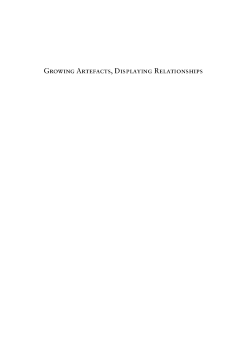
Additional Information
Book Details
Abstract
What gives artefacts their power and beauty? This ethnographic study of the decorated long yams made by the Nyamikum Abelam in Papua New Guinea examines how these artefacts acquire their specific properties through processes that mobilise and recruit diverse entities, substances and domains. All come together to form the ‘finished product’ that is displayed, representing what could be an indigenous form of non-verbal ‘sociology’. Engaging with several contemporary anthropological topics (material culture, techniques, arts, aesthetics, rituals, botany, cosmology, Melanesian ethnography), the text also discusses in depth the complex position of the study of ‘technology’ within anthropology.
Ludovic Coupaye is a Lecturer in Material Culture Studies at the Department of Anthropology of University College London, a member of the Centre de Recherche et de Documentation sur l’Oceanie (CREDO, Marseille), and teaches anthropology of Pacific Arts at the École du Louvre in Paris. He has been a teaching fellow at the Sainsbury Research Unit (UEA) and assistant curator at the Musée du quai Branly in Paris.
“As a descriptive study of Abelam long yams and yam growing, the book succeeds at many levels. The ethnographic reports are rich and detailed, adding much to what we know of Abelam culture specifically, and by extension, to Melanesian studies more generally… Abelam yam displays and rituals intentionally ‘give to see’ (donner à voir) various forms of sociality and other aspects of their lives. This volume delivers valuable ethnographic information about Abelam yam growing and, in engaging with a wide assortment of topics linked with it, provides the readers with much food for thought.” · The Asia Pacific Journal of Anthropology
"…a valuable attempt to bring the influences by which the author was trained—important French writers from the 1930s to the present not already well-recognized in English-written anthropology—into several productive debates in contemporary English-written anthropology." · Fred Damon, University of Virginia
